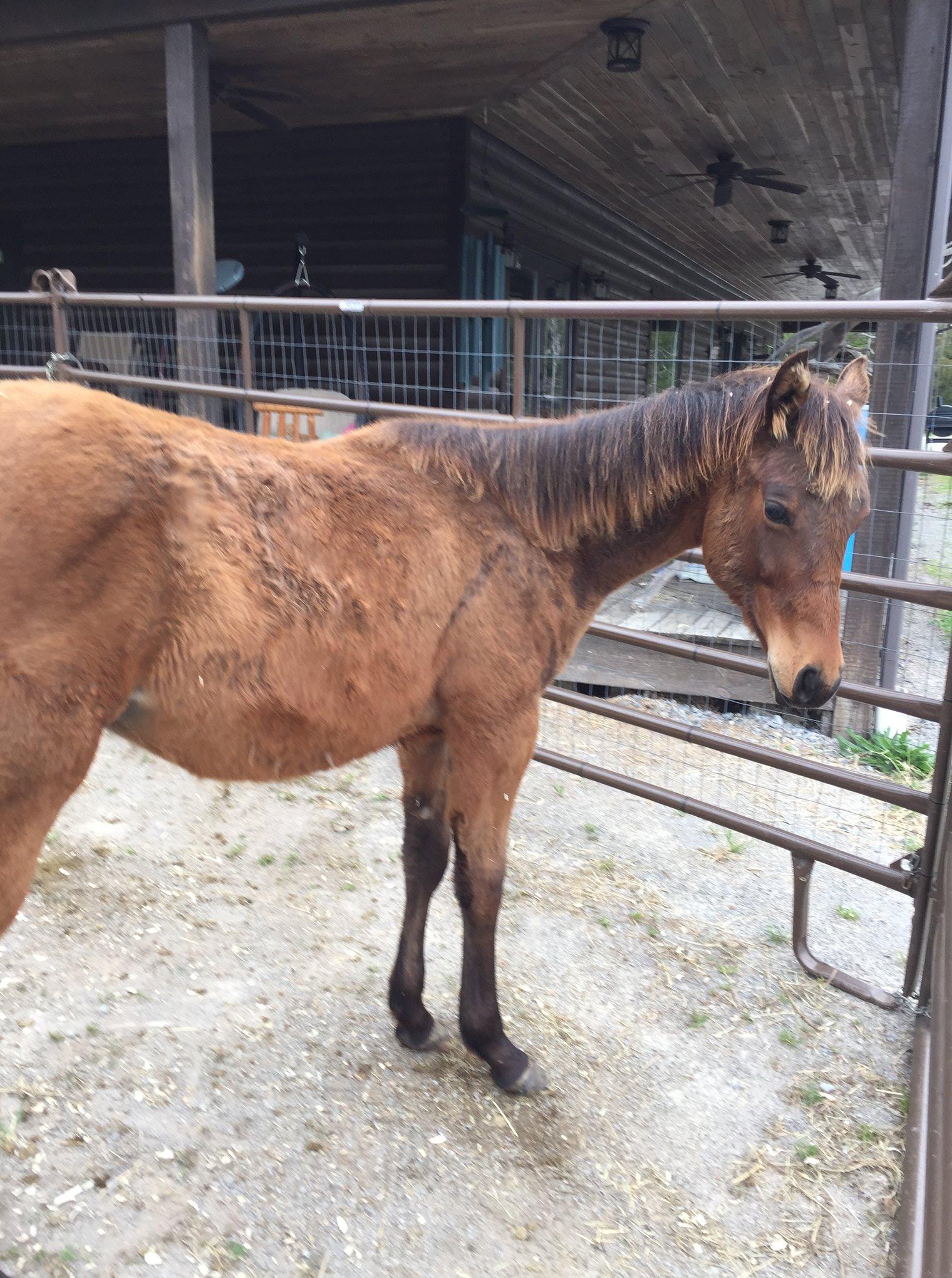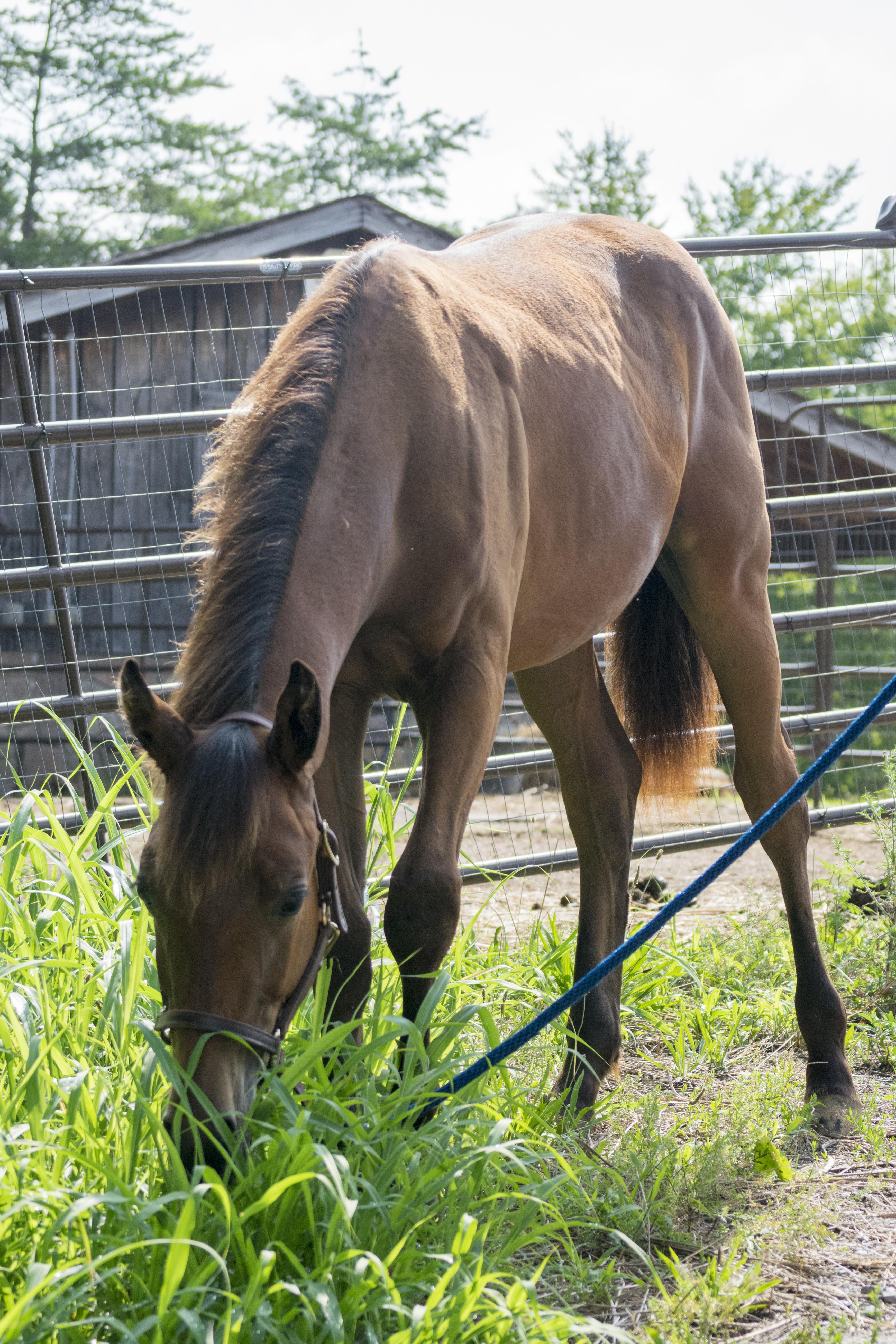
Fat to Fit to First Level: Exploring Options, Part 1
While Esther is grounded from riding to heal from a fall, she has three options: try to ride (bad idea), do absolutely nothing (also a bad idea) or come up with a creative Option C…
Getting slimmer and fitter is an awesome goal. If you want to succeed, you must have tremendous commitment, courage, and honesty – especially with yourself.
Horseback riding is also an awesome thing, and, to ride well, you also need commitment, courage, and honesty. The “courage” part comes to the fore for exploration when something happens that triggers one’s own fear responses.
If you follow this column on a weekly basis, you know I am presently grounded from riding while my body heals from a recent “unplanned dismount.” I find this time of non-riding to be both frustrating and liberating. Frustrating, in that I had some specific training goals for Kaliwohi I wanted to achieve by autumn. (#GoalsBoomBleah) Liberating, in that I have some time to dig deep and ask myself such questions as, “do you enjoy riding?” “What are your present riding goals?” “Where do you want to be, riding-wise, in 6 months? In 12 months? In 5 years?” “Where do you want to be, life-wise, in 6 months? In 12 months? In 5 years?” “Is there something else you’d rather do with your time, Esther?” “You’ve always defined yourself as a horsewoman – is that still true?” “Who are you – right now at this point in your life – who are you?”
I’ll be exploring these questions and answers over the next several weeks here in this column.
Today, however, let’s talk about options when we’re grounded from riding. Depending on one’s injuries and recovery program, there are always options. Option A is ride anyway, which would be extremely unwise if one is mending broken bones. Option B is sit on a chaise lounge and eat bon bons while you sulk in a self-imposed quagmire of “woe is me.” This is also extremely unwise if one is working towards being fit and trim.
The beauty of life is there is always an Option C. Katrina Love Senn taught me that some time ago, and the idea of “but what is option C” is a mental tool I find to be extremely useful.
We horsefolk don’t sit down easily. Our sport is an active one, whether you are six years old with your first backyard pony, or you’ve just won Olympic gold.
So, Option C for me over the past few weeks has been to focus on what I can do, not on what I can’t at present, and that means teaching horsie kindergarten. I have a yearling in my fur-family; “Gil” is a rescue from the slaughter pipeline. Gil arrived at the farm on March 31 of this year, looking like this:

Gil, malnourished and full of worms, March 31, 2018. His dam was of stock horse breeding; sire unknown. Photo by Esther Roberts
While I’ve been “rehabbing” myself for four weeks, Gil has been on an intensive rehabilitation program for four months.

Gil, beginning to blossom with appropriate care, July 17, 2018. Photo by Tess McHone, Everyday Beauty Photography
Gil’s first birthday was July 22, 2018. He weighs 500 pounds. That’s approximately the size of a normal six month old stock horse. So Gil may always be on the small side. The most challenging part of his rehab is his poorly developed feet – his soles are paper-thin and the hoof walls have tried to detach from the soles. (Note to self: supersized cookie bonuses for my vet and farrier this Christmas!)
Teaching young horses to have good manners is one of the most important things a horsewoman can do. So this week, now that I’m healed enough to at least handle a horse, here’s what I’ve been doing with Gil.
Lesson 1: Grooming feels good! Like most horses, Gil enjoys being groomed, especially in the hot, itchy days of summer. Giving him a “spa treatment” while placing him in cross-ties allows Gil to associate standing quietly in cross-ties with positive activities. Bonus fitness opportunity for me: I’m reaching and stretching and moving, while not placing undue strain anywhere.

Gil in cross-ties. I love his ginormous deer-like eyes. Photo by Tess McHone, Everyday Beauty Photography
Lesson 2: The horse must hold his own weight when you’re working with his feet. When Gil first arrived and I began teaching him to allow his feet to be handled, he would nearly fall on me whenever I picked up a front foot. Over time, he has learned to balance himself and now stands quietly while I’m working on his front end. Bonus fitness opp for me: I’m bending and working my core, asking my ribs to stretch and my hip to bear some weight.
Lesson 3: Don’t jack up the hind end. This one’s a lesson for the human. When I’m teaching a horse to get handled all over, the last thing I want to do is encourage bad behavior. For a baby, when I work on the hind feet, I start out bending me to accommodate them and allow their hind foot to remain near the ground, so the hock doesn’t overflex and induce a kick reflex. Over time, I’ll start holding the foot higher (I don’t want my farrier to have to stand on his head to work on a horse!), but, well, baby steps for babies. Bonus fitness opp for me: Here, I must truly flex the ribs and the hip, and while it hurt something awful to get this done every day, it kept my own body stretching and healing, with minimal stiffness.

Cleaning the hind feet. At this stage of Gil’s training, his hind foot is about six inches off the ground. Over time, I’ll ask for increased hock flexion to get the hoof elevated higher. Photo by Tess McHone, Everyday Beauty Photography
Lesson 4: Desensitize. Desensitize. Desensitize. I use every possible opportunity to desensitize a horse. Gil has been reluctant to have his ears handled, and I have been working on that issue since he arrived in March. These days, you can see his progress; after measuring his girth with the weight tape, I draped it over his head. Bonus fitness opp for me: I opted to reach up to loop the tape around Gil’s head, instead of asking him to drop his head to my level. Stretch those ribs, Esther, and keep your flexibility, gurl.

Chill Gil, with the “flappy flatsnake” coiled all over his face. Photo by Tess McHone, Everyday Beauty Photography
Lesson 5: Tickle that baby. Flyspray. ShowSheen. Water in a spray bottle. Whatever the fluid, be sure that baby will stand to be sprayed. I generally keep one hand on a young horse while introducing him to the “tickle” of a sprayed fluid coming at him, and I cover his eyes when spraying his face. Happily, Gil completely ignores the spray (Kaliwohi, despite three years of desensitization, still hates to be sprayed; Grace, my brilliant-but-retired Arabian/mustang cross stands at liberty to be sprayed – like she understands the flyspray will make her more comfortable or something. #BrainiacAlphaMare).
Gil does, however, have an opinion as to the smell of the spray. Bonus fitness opp for me: Repetitive squirting builds forearm muscles, while holding one’s arm aloft to spray helps build upper arm muscles. Who needs these?
“Option C” for me this week has been to work on the ground with a small horse that needs these lessons, so he develops into a well-mannered horse that is a joy for anyone to handle. I have remained as active as possible, taught this young horse some important kindergarten lessons, and enjoyed being a horsewoman from the ground.
Join me on this journey on Facebook: Fat to Fit at Horse Nation (page and group), and my blog www.appalachianchic.com.
#GrowBOLDnotOld
Go Riding.








Leave a Comment